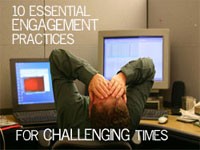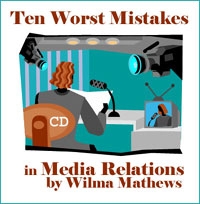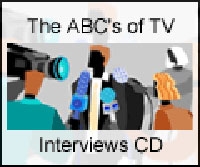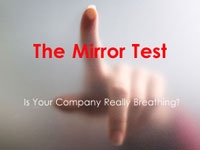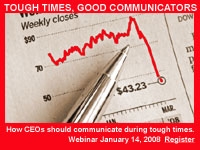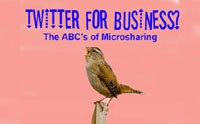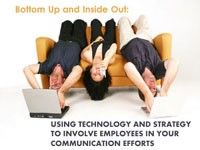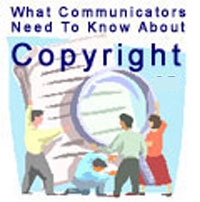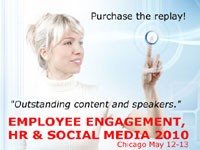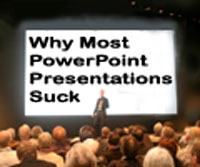Can you speak the language of management? If not, here’s what you’re missing:
· The ability to add value in financial discussions with your boss and other top managers
· The skills needed to get your latest brainstorms adopted by key financial decision makers
· A plethora of financial tools that can help you make better business decisions
· An understanding of how your company’s financial performance affects its most critical asset: the workforce
In just 90 minutes, you’ll gain a new skill set¾and a potential ticket to the management table
Before you take a seat at the management table, you’d better have a solid understanding of key financial terms and accounting concepts. If not, you won’t be able to converse with those seated around you, because finance is the only language they speak.
Overcome the financial language barrier — for good — by attending this audio seminar. Using an easy-to-follow format, James Cole will demystify financial terminology, translate the accounting jargon and illustrate how communicators use financial information to increase their effectiveness.
Don’t miss this vital training event, designed to give you the skills and knowledge you need for holding your own with those who hold the company’s purse strings.
Key learning objectives:
· What’s at stake: Why every communicator should have a solid understanding of finance
· How a balance sheet, income statement and cash flow statement are used to analyze a company’s performance
· What management accounting tools CEOs use to monitor a company’s fiscal health, including EBITDA and pro-forma earnings
· How to cut through the jargon to translate complex financial data into meaningful and useful concepts
· Which financial terms are “must haves” for boosting your business vocabulary, including expenses, assets, capitalization, cash, accrual transactions and many more!
Audio Seminar Bonus: Understand the basics of financial decision-making
James answers real-life questions on:
- What communicators can do to help their organization’s employees better understand how their business works, with the objective of improving performance
- Tips to better communicate financial concepts to a lay audience
- Learning from the mistakes made by Enron
- The best tools to measure financial performance
Your audio seminar leader
James Cole is director of development for the Masonic Home of Virginia. His 25 years of professional experience include roles as auditor, founder, officer and consultant with numerous organizations throughout the U.S. He regularly speaks on such topics as financial reporting, taxes, accounting, fundraising and board development. He was a featured speaker at IABC’s 2005 International Conference in Washington, D.C., and Financial Communication Conference in New York.
No one has to tell you what a great speech is, right? You know one when you hear it.
Well you’re about to hear a bunch of them—and you’re going to learn from them, guaranteed.
Vital Speeches of the Day editor David Murray presents “Speechwriting Jam Session 2010,” 75 entertaining, inspirational and instructive minutes that will have the hair standing up on the same arm you’re scribbling notes with. We’ll discuss, even debate, what makes these great speeches great.
Through dramatic readings from winners of the 2010 Cicero Speechwriting Awards and highlight reels from the Vital Speeches YouTube site, Murray will help us reawaken the giants within us by sharing together excerpts from speeches contemporary and classic, famous and rare. (In the true spirit of an improvisational jam session, you’ll even have a chance to nominate some of your own YouTube favorites, so come prepared!)
You’ll come away from this session with:
• Concrete examples showing how leaders are addressing the issues of this particular moment in business, politics and society.
• A stockpile of examples—video and text—to show reticent speakers: rhetorical tactics that have passed the test and been pulled off by the best.
• Renewed enthusiasm and an expanded sense of what’s possible in leadership communication.
• And a goose bumps, guaranteed.
SESSION LEADER:
- David Murray writes and speaks about communication—business, political and personal. He’s editor of Vital Speeches of the Day, a monthly collection of the best speeches in the world. He writes about sports, people, politics and travel for magazines, newspapers and websites. publications and websites. And he discusses the communication life at his popular personal blog, Writing Boots.http://www.vsotd.comhttp://writingboots.typepad.com/writing_boots/profiles/http://writingboots.typepad.com/

Our Approach to Sustainability Reporting and Stakeholder Engagement
Cecily Joseph, Director of Corporate Responsibility, Symantec Corporation
An engaged workforce is a cultural transformation which must stand the test of time, in both boom and recessionary times. This presentation reinforces the key steps necessary to sustain an engaged culture, improve business results, maintain credibility with employees, while also reinforcing that success involves the “mutual commitment” of both leadership and employees. Bob’s 10 essential steps of engagement are culled from his years of experience working as an internal practitioner, leading engagement initiatives that transformed corporate cultures. These best practices will help firms minimize disengagement while also putting in place steps to maximize employee engagement – the key to capturing discretionary effort. Having been in the trenches in other economic downturns, the presenter will reinforce the need to stay the course, while reminding all that “employees are watching” and “words” alone will not foster an engaged workforce.
- “I learned a lot and got some great ideas. It was very thought provoking.”
- “Good information that I can share with my colleagues.”
- “Good tools and resources sited. Good to hear of a systematic approach.”
Learning Topics
- 10 Key Engagement Steps To Drive Business Results
- Specific Data to make a Business Case for Engagement
- Practical Tools to help in your engagement efforts
- How to show a ROI on your Engagement Efforts
Questions That Will Be Answered
- How can leaders deal with the growing ranks of the disengaged
- How can I convince my leadership team that we need to focus on employee engagement
- How can I prove that employee engagement drives business results
Who Should Attend
- HR and OD professionals, along with other key individuals responsible for human capital development
- Communication professionals
- Key executives and other professionals responsible for “leading people’
Presented by:
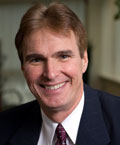 Bob Kelleher is the founder and CEO of The Employee Engagement Group (www.EmployeeEngagment.com), and is a noted speaker, thought leader, and consultant on the subjects of Employee Engagement, Workforce Trends, and Leadership, and often travels the globe giving presentations to and consulting with leadership teams. Having been an internal practitioner for many years, Bob’s practical approach and willingness to share best practices (“been there / done that”) have proven to be a winning formula for audiences throughout the world. Before opening his own consulting business, Bob was the Chief Human Capital Officer for AECOM, a Fortune 500 global professional services firm, with 45,000 employees located in 450 offices throughout the world. Before joining AECOM in 2005, Bob worked for ENSR International, a Massachusetts based 2,300 employee environmental consulting firm with 70 worldwide offices, and now a subsidiary of AECOM. While at ENSR, Bob was Executive Vice President and Chief Operating Officer and spearheaded ENSR’s award winning Employee Engagement programs and initiatives. Bob actively participates in various industry roundtables and associations, and is often a guest speaker on Employee Engagement, Workforce Trends, and Leadership at industry conferences and annual strategic planning meetings. He is a featured “Thought Leader” on Boston.com / Monster.com within the area of Employee Engagement. He holds a BS in Education and an MBA.
Bob Kelleher is the founder and CEO of The Employee Engagement Group (www.EmployeeEngagment.com), and is a noted speaker, thought leader, and consultant on the subjects of Employee Engagement, Workforce Trends, and Leadership, and often travels the globe giving presentations to and consulting with leadership teams. Having been an internal practitioner for many years, Bob’s practical approach and willingness to share best practices (“been there / done that”) have proven to be a winning formula for audiences throughout the world. Before opening his own consulting business, Bob was the Chief Human Capital Officer for AECOM, a Fortune 500 global professional services firm, with 45,000 employees located in 450 offices throughout the world. Before joining AECOM in 2005, Bob worked for ENSR International, a Massachusetts based 2,300 employee environmental consulting firm with 70 worldwide offices, and now a subsidiary of AECOM. While at ENSR, Bob was Executive Vice President and Chief Operating Officer and spearheaded ENSR’s award winning Employee Engagement programs and initiatives. Bob actively participates in various industry roundtables and associations, and is often a guest speaker on Employee Engagement, Workforce Trends, and Leadership at industry conferences and annual strategic planning meetings. He is a featured “Thought Leader” on Boston.com / Monster.com within the area of Employee Engagement. He holds a BS in Education and an MBA.
Stop repeating these 10 proven mistakes when dealing with the media and managing your media relations program!
Ever since outlaw Jesse James wrote and issued the first news release, media relations practitioners have steadfastly refused to learn from the mistakes of their forebears.In James’s case, he didn’t take into account the suspicious and questioning nature of the reading populace, who viewed his bombastic news releases as early American “spin control.”
Learning Topics
Underestimating the intelligence of your audience is just one of the 10 major mistakes covered in this session. Others include:
- Not being a student of the media, keeping up with their changes needs and trends
- Confusing media output numbers with bottom-line outcome measures
- Annoying editors with misdirected and/or badly-prepared materials
- Not routinely evaluating your media relations programs and management
- Trying to substitute media relations for communication
Wilma answers real-world questions on:
- Holding the media accountable and keeping them from allowing bias or half-truths from creeping into news coverage, so that what is reported is straight, honest and fair
- How recent college graduates — with no contacts — can build relationships with the media
- The most effective ways to pitch
- Dealing with a less-than-objective journalist
- The best way to get to know a editor, writer or reporter
- The most important and effective tools in media relations
- The best day/time to pitch stories
- The least offensive way to bring a reporter’s error to his or her attention – and how to ask for a correction
- Pushing the envelope: How persistent you should be in making your pitch
- Teaching senior management the difference between a subjective, self-serving news item and a legitimate, content-rich press release
- Measures practitioners should routinely implement to measure results on the fly – especially during a crisis
- The biggest changes in media relations over the past 10 years
Presented by:
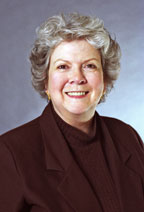 Wilma Mathews, ABC and IABC Fellow, works for Arizona State University as director of constituent relations. She also conducts media relations seminars, provides media training for corporate executives and is co-author of On Deadline: Managing Media Relations (4th edition, Spring 2006). Her background includes corporate communications and international public relations for AT&T/Lucent; nonprofit communication for two chambers of commerce and a medical center; and writing/editing for a newspaper and magazine. A national and international speaker, Wilma also contributes articles to trade publications and lectures on PR and media relations at ASU.
Wilma Mathews, ABC and IABC Fellow, works for Arizona State University as director of constituent relations. She also conducts media relations seminars, provides media training for corporate executives and is co-author of On Deadline: Managing Media Relations (4th edition, Spring 2006). Her background includes corporate communications and international public relations for AT&T/Lucent; nonprofit communication for two chambers of commerce and a medical center; and writing/editing for a newspaper and magazine. A national and international speaker, Wilma also contributes articles to trade publications and lectures on PR and media relations at ASU.
Have you ever watched your client on television and thought: “Oh, my! Look at how many chins he has, and what’s that terrible glare coming off his shirt and forehead? I never noticed in our meetings that he was that heavy. He also looks scared to death – and why does he keep licking his lips?” You tried to coach him on his message. In fact, you did all you could do to help him develop sound bites, and now you can hardly concentrate on the message with the way he looks, because he is doing so many distracting things.
This CD will teach you how to effectively coach your clients and colleagues for appearances on TV, both live and prerecorded. It will teach you when and how to offer praise and criticism without being offensive. And it covers how interviewees should dress, posture themselves and provide effective message delivery. Your purchase also includes a slew of extras – at no extra cost!
Learning Topics:
- The tricks of the trade to help people appear calm and confident on camera, even if they are not
- How to look natural — from make-up to body language and movements
- Tips and techniques to help prevent some of the unexpected distractions that can prohibit your true message from getting out to your audience
- How to motivate your clients and colleagues to improve their media performances
- How to tactfully and effectively learn to stress the need for “rehearsal”
TJ answers real-world questions on:
- Suggestions to get your boss to undergo some training
- How to convince your CEO to talk to the press
- Techniques to overcome annoying speech tics
- How to keep your answers concise and to the point
- How to provide constructive feedback in a jiffy
- How not to come off as though you’re dodging a question—even if you are
- What your executive should bring into a television or radio interview
- How to prepare an executive for the hard questions
Instructor:
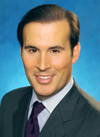 TJ Walker, president of Media Training Worldwide, is one of the world’s leading authorities on media and presentation training. With more than 20 years of media training experience, TJ has trained thousands of CEOs, authors and experts, including Nobel Peace Prize winners, leading government officials in the United States, European prime ministers and African diplomats. He is producer and host of daily audio and video Speakcast broadcasts, covering media and presentation training tips and techniques. A leading corporate trainer, he has personally trained top executives at Unilever, Bank of America, Hess, Allstate Insurance, Charles Schwab, Akzo Nobel, US Trust, Dun and Bradstreet, The Hartford and EMC. He is also the official media trainer of the Miss Universe Organization.
TJ Walker, president of Media Training Worldwide, is one of the world’s leading authorities on media and presentation training. With more than 20 years of media training experience, TJ has trained thousands of CEOs, authors and experts, including Nobel Peace Prize winners, leading government officials in the United States, European prime ministers and African diplomats. He is producer and host of daily audio and video Speakcast broadcasts, covering media and presentation training tips and techniques. A leading corporate trainer, he has personally trained top executives at Unilever, Bank of America, Hess, Allstate Insurance, Charles Schwab, Akzo Nobel, US Trust, Dun and Bradstreet, The Hartford and EMC. He is also the official media trainer of the Miss Universe Organization.
TJ is the world’s most widely published and produced media trainer, with more than 50 books, training videos, CDs and software programs to his credit. He has also been a media columnist for Investor Relations Magazine. Additionally, Walker is known internationally for his many years as a political commentator for the Voice of America Radio Network. More than 65,000 readers subscribe to his weekly Media Training Tips Newsletter, including most of the Fortune 500 corporations. He is a frequent news commentator and has appeared often on MSNBC, Fox News Channel, Court TV and Bloomberg TV. He also has been a syndicated TV and talk show host, appearing on or hosting more than 2000 TV and radio shows. He has also hosted talk radio shows on seven different networks and has been featured in the New York Times, NBC News, ABC News, CBS radio and most major radio news outlets.
Walker was a merit scholar at Duke University, where he graduated magna cum laude. He has lectured or conducted trainings at Yale University, Columbia University and Princeton University. He is also co-leader of the Communitelligence Media Training community and posts a daily video clip on the site.
Who should Purchase:
This practical, information-packed learning opportunity is ideal for public relations professionals, as well as professionals in:
- Corporate Communications
- Internal Communications
- Public Affairs
- Public Relations
- Marketing
- Webcast Marketing
- Anyone who is associated with television broadcasts
- College/university libraries and bookstores
Think of any great presenter—Steve Jobs, Richard Branson or Jeff Bezos—and it won’t take you long to figure out that they are also master storytellers. Storytelling is increasingly becoming a “must-have” skill for business leaders, but you still won’t find it on any MBA curriculum.
This webinar will give you a deeper understanding why story is such a powerful strategic tool and how it can be used in the business setting. We will show you a specific “before and after” example of how a case study was transformed into powerful case story for pitching new business. We’ll also give you some key tips on how to craft and use stories to make an impact in your next big presentation or business meeting.
“As an ex-newspaper reporter, I have always recognized the value of storytelling. This webinar helped provide a great framework for bringing people into the important strategic and cultural stories I need to be communicating.”
What You Will Learn:
- The neuroscience and psychology that proves why stories work
- Tips for transforming run-of-the-mill presentation content into powerful stories that engage audiences
- How storytelling can be used as strategic tool to build chemistry and trust with others
- How even data-driven presentations can benefit from the art of storytelling
- The difference between conventional storytelling and strategic storytelling for business purposes. Please bring your ideas and questions!
Who Should Attend
This webinar is primarily aimed at those in the early stages of implementing or learning about strategic business storytelling, although it will also help more advanced practioners to focus their efforts. It is especially suitable for:
- Small and mid-sized business leaders
- Corporate executives who are new to storytelling
Presented by:
 Jane Praeger is a former documentary filmmaker and faculty member in Columbia University’s M.S. program in Strategic Communications and Communications Practice where she teaches presentation design and delivery, communications strategy, strategic storytelling and writing. She founded Ovid Inc. in 1992 to help people find their public voices. Since then, she has provided speech, presentation, media training and customized workshops, to corporations such as Nickelodeon, Coach, Estee Lauder, McKinsey & Company, Euro RSCG Worldwide, as well as other technology, entertainment, and consulting firms. On the non-profit side, she has worked with Open Society Foundations, Doctors Without Borders, Atlantic Philanthropies, The Ms. Foundation, Harvard University, Columbia University Business School, and many others.
Jane Praeger is a former documentary filmmaker and faculty member in Columbia University’s M.S. program in Strategic Communications and Communications Practice where she teaches presentation design and delivery, communications strategy, strategic storytelling and writing. She founded Ovid Inc. in 1992 to help people find their public voices. Since then, she has provided speech, presentation, media training and customized workshops, to corporations such as Nickelodeon, Coach, Estee Lauder, McKinsey & Company, Euro RSCG Worldwide, as well as other technology, entertainment, and consulting firms. On the non-profit side, she has worked with Open Society Foundations, Doctors Without Borders, Atlantic Philanthropies, The Ms. Foundation, Harvard University, Columbia University Business School, and many others.
 Heather Thomas is a business builder who has clocked countless hours performing “on stage” in the presentation spotlight. She earned her stripes in the agency world, working at Agency.com, Modem Media and the digital agency Critical Mass where she built their Business Development and Corporate Marketing practice from the ground up, ultimately tripling their revenue. After crafting hundreds of high-stakes presentations to win clients such as Procter & Gamble, NASA and Dell, Heather joined Ovid in 2010 to pass what she learned about persuasive presentations to others. In addition to her work with Ovid, Heather runs Winsome, a business development consulting boutique. She is also an adjunct instructor at Columbia University where she teaches Masters students the art of strategic storytelling. Heather is a cum laude graduate of Princeton University.
Heather Thomas is a business builder who has clocked countless hours performing “on stage” in the presentation spotlight. She earned her stripes in the agency world, working at Agency.com, Modem Media and the digital agency Critical Mass where she built their Business Development and Corporate Marketing practice from the ground up, ultimately tripling their revenue. After crafting hundreds of high-stakes presentations to win clients such as Procter & Gamble, NASA and Dell, Heather joined Ovid in 2010 to pass what she learned about persuasive presentations to others. In addition to her work with Ovid, Heather runs Winsome, a business development consulting boutique. She is also an adjunct instructor at Columbia University where she teaches Masters students the art of strategic storytelling. Heather is a cum laude graduate of Princeton University.
Connection is the force that inspires employees to give their best efforts and align their behavior with organizational goals. In this webinar, Michael Lee Stallard and Jason Pankau describe how Steve Jobs of Apple, Ed Catmull of
Pixar, A.G. Lafley of P&G, as well as other successful leaders, communicate to connect with employees.
Learn how you can help leaders by:
- Communicating an “Inspiring Identity” that makes employees feel proud of their organization,
- Communicating with “Human Value” that makes employees feel valued as human beings and not just as human doings,
- Communicating to increase “Knowledge Flow” that make employees feel informed and heard in ways that improve employee engagement, the quality of decisions made and stimulate innovation
Presented by:
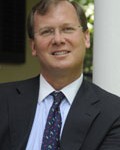 Michael Lee Stallard is the co-founder and president of E Pluribus Partners, a consulting firm based in Greenwich, Connecticut Michael’s work has also been featured in the media including The Wall Street Journal, The New York Times, Human Resource Executive, The Economic Times (India), Developing HR Strategy Journal (UK), Rotman (Canada) and Fox Business Now.
Michael Lee Stallard is the co-founder and president of E Pluribus Partners, a consulting firm based in Greenwich, Connecticut Michael’s work has also been featured in the media including The Wall Street Journal, The New York Times, Human Resource Executive, The Economic Times (India), Developing HR Strategy Journal (UK), Rotman (Canada) and Fox Business Now.
Jason Pankau is a leading authority on leadership and teams as they relate to employee and customer engagement. Jason’s clients have included Johnson & Johnson, NorthwesternUniversity, UBS and several hedge funds.
This webinar by James E. Lukaszewski, one of America’s most thoughtful and visible crisis advisors, will take participants through a high level strategic discussion of the crucial elements of crisis readiness. Lukaszewski defines a crisis as, “a people-stopping, show-stopping, product-stopping, reputation-redefining and trust-busting event that creates victims and/or explosive visibility.”
 While his initial response strategy discussion will focus around his five crucial steps to take during the golden hour of crisis, he’ll also talk extensively about readiness and avoiding the most predictable gaffs and problems that can torpedo even a well-designed and practiced response process.
While his initial response strategy discussion will focus around his five crucial steps to take during the golden hour of crisis, he’ll also talk extensively about readiness and avoiding the most predictable gaffs and problems that can torpedo even a well-designed and practiced response process.
Lukaszewski will talk about the readiness process, what leaders should be doing when crises occur, as well as how to prevent crisis; the crucial missing ingredients of most crisis plans; victim management; response triggers; what you do first; the ideal grand response strategy; how to forecast your greatest vulnerabilities; and how managers can recover their leadership and the organization’s reputation as they respond appropriately during these powerful events.
Crisis situations present extraordinary threats to organization leadership and reputation. Much crisis readiness activity is geared toward managing the explosive media coverage that often occurs when crises erupt.
What you will learn:
- The five crucial steps to take during the golden hour after crisis erupts
- The seven crucial tests any readiness plan must pass to effectively manage crisis and recover your reputation
- The seven crisis response failure profiles and how to avoid them
- The four crucial things leaders need to do when crisis occurs
- The seven mistakes and gaffs leaders need to avoid
- A perfect response communicated poorly will always be remembered as a poor response
James E. Lukaszewski is the author of a dozen books and manuals on crisis management, being a trusted advisor, and overcoming various crisis situations. He’s a member of the Crisis Management and Business Continuation Council (CMBCC) of ASIS, and has served on several ASIS standard setting task forces, including Workplace Violence. Corporate Legal Times described Jim as, “one of 28 crisis experts who should be on your speed dial when all hell breaks loose.” PR Week describes him as, “one of 24 crunch-time counselors who needs to be at your fingertips when crises occur.” In 2013, Trust Across America listed him as one of the “Top 100 Thought Leaders in Trustworthy Business Behavior.” Jim’s clients will tell you that his strategy of doing things quickly, that are simple, sensible, constructive and positive is a powerful formula for success and reputation protection.
His latest book, Lukaszewski on Crisis Communication, What Your CEO Needs to Know About Reputation Risk and Crisis Management, released in March 2013, is now available at Amazon.com. You can follow James on Twitter and read hisCrisis Guru blog.
Hailed a “Celebrity CMO” by Forbes Magazine, and famous for his outspoken appearances on numerous television networks, Jeffrey Hayzlett is widely recognized as one of the most influential marketers of our time. He’ll talk to us about what he calls “The Mirror Test, ” the title of his new book and a new way to look at your company’s marketing and sales strategy. Hayzlett will share with you some of the newest ways to win with social media, redefine your elevator pitch and help you to transform your business. He has just lead one of the biggest iconic turnarounds of Kodak and is here to share how you can do the same for your business. Will your business be positioned to fog the mirror and grow in today’s new economy?
Learning Topics:
- How to give your business the mirror test and find out if it is really breathing
- Why and how you have to sharpen your elevator pitch
- How to win with social media
- How to really focus on your bottom line
Presented by:
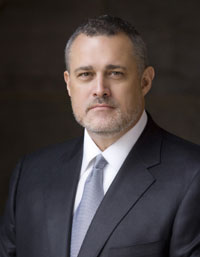 Jeffrey Hayzlett is the bestselling author of the “The Mirror Test” on how you and your company must adapt or die. Speaking frequently around the world, his topics include business growth, communications, and marketing. Mr. Hayzlett also keynotes at events such as The Economist Marketing Summit, THE Conference on Marketing, the 140 Character Twitter Conference, CMO Summits, Mobile Marketing Forum, Digital Life Design Conference, Photo Marketing Association Conference, Direct Marketing Association Leadership Forum, and National Postal Forum. He is cited as a leading marketing expert in numerous books, magazines, and newspapers worldwide, and is a frequent television guest and commentator, having appeared on shows including CNBC’s The Big Idea with Donny Deutsch, Fox Business News, and NBC’s Celebrity Apprentice with Donald Trump.
Jeffrey Hayzlett is the bestselling author of the “The Mirror Test” on how you and your company must adapt or die. Speaking frequently around the world, his topics include business growth, communications, and marketing. Mr. Hayzlett also keynotes at events such as The Economist Marketing Summit, THE Conference on Marketing, the 140 Character Twitter Conference, CMO Summits, Mobile Marketing Forum, Digital Life Design Conference, Photo Marketing Association Conference, Direct Marketing Association Leadership Forum, and National Postal Forum. He is cited as a leading marketing expert in numerous books, magazines, and newspapers worldwide, and is a frequent television guest and commentator, having appeared on shows including CNBC’s The Big Idea with Donny Deutsch, Fox Business News, and NBC’s Celebrity Apprentice with Donald Trump.
He has received numerous global marketing and business awards and honors, including the Frost & Sullivan Lifetime Achievement Award for marketing. He was named “Business to Business Marketer of the Year” by BtoB Magazine and “Direct Marketer of the Year” by the University of Akron Taylor Institute for Direct Marketing. In 2008, Mr. Hayzlett was inducted into the College of Business Administration Direct Marketers Hall of Fame. In June 2009, he was awarded the prestigious “G.D. Crain Jr. Award for Marketing Excellence” and inducted into the BMA Hall of Fame at the Business Marketing Association’s annual conference. Previously, the U.S. Small Business Association named him “Entrepreneur of the Year.”
Mr. Hayzlett currently sits on the Business Marketing Association (BMA) board of directors and is a past chairman of BMA. He is a member of the advisory board of the CMO Council, chairman of the Sales and Marketing Executives International (SMEI) Foundation for Marketing Education, a permanent trustee of the SMEI Academy of Achievement Sales and Marketing Hall of Fame, and a two-term past chairman of SMEI. He serves on Sales & Marketing Management Magazine’s 2009 Editorial Advisory Board. Mr. Hayzlett remains a trustee of Pi Sigma Epsilon National Education Foundation, an international sales and marketing fraternity.
Mr. Hayzlett has nearly 25 years of international marketing, sales, and customer relations management experience. He joined Kodak in April 2006 as Chief Marketing Officer and Vice President of the Graphic Communications Group (GCG). In this role, he was responsible for leading all marketing activities for the business, including product positioning, segment marketing, branding, marketing communications, customer development, business research, marketing strategy, and business development activity. He became Chief Business Development Officer in September 2007 and was responsible for Brand Development and Management, Market Development, Corporate and Product Public Relations, Communications and Public Affairs, Corporate Sponsorships, Business Development, Corporate Relationships and Partnerships, and Marketing.
Webinar excerpt … Jeffrey Hayzlett on …
Business Transparency (3 min.)
Business Transparency (3 minutes)
Two areas of advice for professional marketers and communicators (1.5 minutes)
Jeffrey Hayzlett on Digital Life by Shelly Palmer


Too many companies – including some who should know better – still think that you have to choose between making money and making sense. You don’t.

A systems ecologist and business strategist with nearly 40 years experience in business, communications, and environmental innovation, Friend combines broad business experience with unique content experience spanning strategy, systems ecology, economic development, management cybernetics, and public policy. Tomorrow magazine called him “One of the country’s leading environmental management consultants—a real expert who combines theoretical sophistication with hands-on, in-the-trenches know-how.”
Friend is Adjunct Faculty at Presidio Graduate School, and guest faculty at California College of the Arts. He lectures widely on business strategy and sustainability issues and writes The New Bottom Line, offering strategic perspectives on business and environment. Friend is author of the acclaimed book The Truth About Green Business.

Activating Companies for Good: The Trojan Horse of Social Responsibility
How companies are innovating new ways to connect people, planet and engagement.
Judah Schiller, Co-founder and CEO, Saatchi & Saatchi S, North America
Presented at:
COMMUNICATING SUSTAINABILITY 2010: Integrating Social Responsibility Into Your Organization’s DNA
How effective CEO presentations can help companies rebound during an economic downturn
When a company’s earnings and stock price are on the rise, it may not be critically important how well a CEO performs behind a lectern, in front of cameras and microphones, or at a hearing table. But as earnings and stock price head south, a CEO’s ability to inspire confidence through speeches and presentations can prove essential to a company’s ability to survive and recover. CEOs who communicate well can, at the very least, buy the time needed to put an effective turnaround strategy in place.
With the economy battered by the credit crisis, high fuel prices, and other maladies, growing numbers of corporate leaders face the challenge of finding ways to inspire key audiences who are both very worried and extremely important—employees, analysts, stockholders, regulators, and the press.
This webinar offers some very specific, hands-on advice how CEOs should communicate during tough times. The advice is based on the experience of key CEO’s who have been there and done that –Former CEOs Lee Iacocca of Chrysler and Champ Mitchell of Network Solutions, Jack Welch of GE, as well as current CEOs John Chambers of Cisco Systems and Brightpoint’s Robert Laikin. All used first-person communications effectively to turn companies around or dramatically boost their performance.
Sun Microsystems CEO Scott McNealy once said, “Communication needs to be a core competency of any business. It starts with the CEO.”
You Will Learn How CEOs Can:
- Make communication a priority.
- Be proactive, not reactive
- Handle problems and mistakes.
- Develop and present a recovery plan.
- Match their presentations to their audience
- and much more
Presented by:
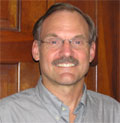 Dr. Jeff Porro, Ph.D. has written “first-person speeches” and provided communication strategies for the CEOs of Sodexo, Eastman Chemicals, the McGraw Hill Companies, Office Depot, the COO of General Mills, as well as for diplomats such as former UN Secretary General Kofi Annan, and other government leaders, and presidents of some of the nation’s leading trade and professional associations. He helps corporate, government and nonprofit leaders take their visions to a new level, moving key audiences with speeches that engage minds, open eyes, touch hearts and awaken the spirit. In addition to offering his expertise to world and business leaders, he has extended his skills to the world of entertainment. Dr. Porro discovered and researched the true story of a Jim Crow-era African American college debate team, and helped turn it into the 2007 feature film The Great Debaters starring Denzel Washington.
Dr. Jeff Porro, Ph.D. has written “first-person speeches” and provided communication strategies for the CEOs of Sodexo, Eastman Chemicals, the McGraw Hill Companies, Office Depot, the COO of General Mills, as well as for diplomats such as former UN Secretary General Kofi Annan, and other government leaders, and presidents of some of the nation’s leading trade and professional associations. He helps corporate, government and nonprofit leaders take their visions to a new level, moving key audiences with speeches that engage minds, open eyes, touch hearts and awaken the spirit. In addition to offering his expertise to world and business leaders, he has extended his skills to the world of entertainment. Dr. Porro discovered and researched the true story of a Jim Crow-era African American college debate team, and helped turn it into the 2007 feature film The Great Debaters starring Denzel Washington.
As head of Porro Associates, LLC, Dr. Porro draws on his background as a research scholar and a Washington policy analyst to weave persuasive arguments. At the same time, his creative writing has given him the skill and empathy to capture a speaker’s voice and evoke the speaker’s passion. Dr. Porro holds a Ph.D. in political science from U.C.L.A..
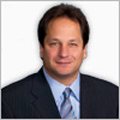 Robert Laikin, founder of Brightpoint, has served as a member of Brightpoint’s board of directors since its inception in August 1989. Mr. Laikin has been Chairman of the Board and Chief Executive Officer of the Company since January 1994. Mr. Laikin was President of Brightpoint from June 1992 until September 1996 and Vice President and Treasurer of Brightpoint from August 1989 until May 1992. From July 1986 to December 1987, Mr. Laikin was Vice President, and from January 1988 to February 1993, President of Century Cellular Network, Inc., a company engaged in the retail sale of cellular telephones and accessories. His honors and awards include:
Robert Laikin, founder of Brightpoint, has served as a member of Brightpoint’s board of directors since its inception in August 1989. Mr. Laikin has been Chairman of the Board and Chief Executive Officer of the Company since January 1994. Mr. Laikin was President of Brightpoint from June 1992 until September 1996 and Vice President and Treasurer of Brightpoint from August 1989 until May 1992. From July 1986 to December 1987, Mr. Laikin was Vice President, and from January 1988 to February 1993, President of Century Cellular Network, Inc., a company engaged in the retail sale of cellular telephones and accessories. His honors and awards include:
- Recipient of the William L. Haeberle Entrepreneurial Legacy Award for 2008
- Inducted into the Central Indiana Business Hall of Fame in 2008
- Received a Stevie Award for Best Turnaround Executive in 2007
- Recipient of the Distinguished Entrepreneur Award by the Kelley School of Business Alumni Association (1999)
- Recipient of the Indiana Entrepreneur of the Year Award (1995)
- Received an honorable mention in 1995 Inc. Magazine National Entrepreneur of the Year Award
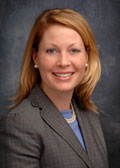 Kelly R. Lang is Director of Strategic Communications in the Corporate Communications department of Cisco Systems. Ms. Lang joined Cisco in 2001 as Marketing Communications Manager and in 2003 joined the Office of the President as John Chambers’ Executive Communications Manager. Today, Ms. Lang is responsible for the Executive Communications and Operations functions including the Office of the Chairman and CEO (OCC), the Chief Financial Officer (CFO), and the Chief Globalisation Officer (CGO). Prior to joining Cisco, Ms. Lang was Program Manager for a Global Event Marketing Organization, Nth Degree, from 1998-2000. From 1996-1998, Ms Lang was Assistant Director of Administration with RCI Group, Inc. after graduating with a Bachelor of Arts degree from the University of Maryland, where she was recognized with outstanding student achievements including Maryland’s Talent and Tutor Search Program.
Kelly R. Lang is Director of Strategic Communications in the Corporate Communications department of Cisco Systems. Ms. Lang joined Cisco in 2001 as Marketing Communications Manager and in 2003 joined the Office of the President as John Chambers’ Executive Communications Manager. Today, Ms. Lang is responsible for the Executive Communications and Operations functions including the Office of the Chairman and CEO (OCC), the Chief Financial Officer (CFO), and the Chief Globalisation Officer (CGO). Prior to joining Cisco, Ms. Lang was Program Manager for a Global Event Marketing Organization, Nth Degree, from 1998-2000. From 1996-1998, Ms Lang was Assistant Director of Administration with RCI Group, Inc. after graduating with a Bachelor of Arts degree from the University of Maryland, where she was recognized with outstanding student achievements including Maryland’s Talent and Tutor Search Program.
Ms. Lang is passionate about business and how communication helps drive business strategy to become a change agent for the organization. Her focus on process, operational excellence and hiring the right talent to support highly visible executives helps drive a more integrated, cross-functional communication effort that highlights the increasingly complex and important role of the communications professional.
Who Should Attend
This webinar is primarily aimed at communicators and executives trying to cope with a slowing economy, including external communications, internal communications, and shareholder communications.
In this information-packed webinar you will learn how to turn your trusty old laptop or desktop into your very own personal writing assistant. Listen to Daphne, a writing coach and former corporate communicator and journalist offer dozens of neat tips to make your computer and software work wonders for your writing effectiveness and speed.
What You Will Learn:
- The powerful tools hidden within MS Word you can harness to make yourself a better writer.
- The exact number of words you should write per sentence for maximum reader appeal.
- Three poweful and unusual ways to use the “search” function for better writing.
- The common misunderstanding about correct paragraph length (hint: your high school and college teachers had it all wrong!)
- The names of powerful pieces of software that you should rush out and buy immediately (it costs less than $40!)
- Two tips for better incorporating research and interview notes into your writing
- How you can become your own best editor.
Presented by:
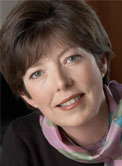 Daphne Gray-Grant started her writing life as a journalist at her family’s weekly newspaper in Vancouver, B.C. – and then quickly advanced to become features editor at a busy metropolitan daily. From there she moved into corporate communications, producing newsletters, brochures and annual reports for a wide range of clients. Despite her many years of experience she never really enjoyed writing — until she set about developing the tools and techniques to do it better. To share this knowledge, in 2005 she launched an online coaching business, http://www.publicationcoach.com , working with individuals and companies seeking to improve their writing skills. Through her site, she offers a popular and free weekly newsletter called Power Writing.
Daphne Gray-Grant started her writing life as a journalist at her family’s weekly newspaper in Vancouver, B.C. – and then quickly advanced to become features editor at a busy metropolitan daily. From there she moved into corporate communications, producing newsletters, brochures and annual reports for a wide range of clients. Despite her many years of experience she never really enjoyed writing — until she set about developing the tools and techniques to do it better. To share this knowledge, in 2005 she launched an online coaching business, http://www.publicationcoach.com , working with individuals and companies seeking to improve their writing skills. Through her site, she offers a popular and free weekly newsletter called Power Writing.
Who should purchase:
- Writers
- Editors
- Designers
- Publishers, print and electronic
As Twitter takes off as a branding tool there is an overriding sense of uncertainty. What is the set of tools (video, text, photo, audio, search, clients, etc.) that comprise microsharing? What does it do? What can we use it for? How do we reach our audience here? How is this different? How can we measure success? How do we govern it? What works?
Smart businesses understand how best to approach the microsharing opportunity. In this webinar, we’ll learn and develop standards of excellence, authenticity and engagement that will work for your organization.
Testimonial: “At first I thumbed my nose because Twitter struck me as a mile wide and an inch deep; but Pistachio knew her stuff and quickly engaged me with relevant material.”
What You Will Learn:
- Understand the territory and shortcut your learning curve
- Innovate productive, valuable, profitable uses of microsharing
- Save time and money
- Avoid damaging mistakes
- Be engaging, genuine and use the medium to its fullest
- (and… have fun doing it!)
What You Will Learn:
- Understand the territory and shortcut your learning curve
- Innovate productive, valuable, profitable uses of microsharing
- Save time and money
- Avoid damaging mistakes
- Be engaging, genuine and use the medium to its fullest
- (and… have fun doing it!)
Questions Answered:
- Landscape for business use of Twitter and microsharing generally
- How to think about brand opportunities in microsharing
- What’s on the horizon? What trends should we watch for next
Who Should Purchase
Brands …engage more deeply with their consumers and markets in strategic and powerful ways that microsharing makes possible.
Individuals …build your network, access better professional relationships, faster knowledge-sharing and leveraged problem-solving. Microsharing is particularly valuable for Executives, sales and marketing professionals, consultants, freelancers and celebrities.
Anyone … develop dynamic and engaging “behind the scenes” personalities, content, sneak-previews and other genuinely engaging “teaser” content during the normal process of producing your product.
Presented by:
 Laura “@Pistachio” Fitton is one of the first prominent “microbloggers,” with roughly 6,500 readers on Twitter. An early beta tester of Seesmic and Qik, she connects people to new ideas and innovations using all the tools of microsharing.
Laura “@Pistachio” Fitton is one of the first prominent “microbloggers,” with roughly 6,500 readers on Twitter. An early beta tester of Seesmic and Qik, she connects people to new ideas and innovations using all the tools of microsharing.
Her innovative use of social media has also gotten the attention of the top minds in technology, as profiled by Naked Conversations author Shel Israel for his Global Survey. Laura has also been quoted in The New York Times Magazine, BusinessWeek, The New York Times, The LA Times, Newsweek.com, Inc.com, CIO Magazine, CNET, ZDNet and many other magazines, publications, web shows and blogs. She speaks at technology conferences, private industry and guest lectures at Bentley College.
Laura is a magna cum laude graduate of Cornell University’s eclectic College Scholar program. In “past lives” she studied science writing with Carl Sagan, rock climbed, sailed on a schooner, raised a niece, ran a hobby farm, traveled and lived abroad.
Today she lives in Boston with two toddler daughters and a giant Leonberger. She practices Ashtanga yoga and plays ice hockey in her “spare” time, and is a stroke survivor dedicated to raising awareness.
Top down, bottom up, lateral and inside-out communication have all been around forever. But the arrival of social technologies is dramatically changing the way people communicate with each other, their friends and their colleagues both inside and outside the corporate walls.
Is it already out-of-control? Or are their powerful ways to support and channel this “social communication” so that it builds positive synergy around your brand, focuses organizational activity, and reduces friction in the path of change and performance.
This webinar explores this brave new world of social communication and takes a hard look not only at the tools–but at strategies and stories of how this works in reality. Our three experts will address the topic from the vantage point of
- “stakeholder re-engagement” (mutual recognition of changed business climate and required new ways of working)
- “brand advocacy” (the essential steps to identifying internal advocates, develop guidelines and training, and how to create an integrated communications strategy that gives your employees a reason to live and socialize your brand)
- Technology (moving from facilitating and growing relationships likeTwitter to fundamentally changing tone and content of internal dialogue)
What You Will Learn:
- How to identify your organization’s key social communicators and how to best engage them
- Starting a pilot, nurturing it, and making the case for broader implementation
- Encouraging and managing participation
- Identifying what if any extra technologies to use
- Processes for keeping your organization’s values and messages present
- Figuring out the metrics
Who Should Attend
This webinar is primarily aimed at those in the early stages of implementing or learning about social media, although it will also help more advanced practioners to focus their efforts. It is especially suitable for:
- Small and mid-sized business leaders
- Corporate executives who are new to social media
Mike Klein–The Intersection/CommScrum is a Brussels-based strategic communications pro specializing in social, network and tribal communication in organizations and in the public sphere. An MBA graduate of London Business School, Mike is a partner in Commscrum, a blog for alternative voices in the internal and business communications world. Mike was a political campaign manager for state and local candidates and initiatives in the United States from 1987-1996, and has worked for Shell, Cargill, easyJet Airlines, the US Department of Transportation and Smythe Dorward Lambert in ten years as an internal communicator.
 Elizabeth Lupfer is Senior Manager, Web Technologies and Interactive Media, at Verizon, where she drives the employee experience of the corporate intranet. Elizabeth is a member of Verizon’s Social Media Council, and advocates the use of social media within internal and external communication channels to drive employee engagement — recently working with colleagues to launch the pilot of Verizon’s Social Media Ambassador program. Prior to Verizon, Elizabeth worked in Corporate Employee Communications for AOL, where she honed her passion for leveraging web technologies to support integrated communications efforts. Elizabeth also authors strategies to drive engagement, collaboration and productivity through the judicious use of social media tools through her blog,The Social Workplace.
Elizabeth Lupfer is Senior Manager, Web Technologies and Interactive Media, at Verizon, where she drives the employee experience of the corporate intranet. Elizabeth is a member of Verizon’s Social Media Council, and advocates the use of social media within internal and external communication channels to drive employee engagement — recently working with colleagues to launch the pilot of Verizon’s Social Media Ambassador program. Prior to Verizon, Elizabeth worked in Corporate Employee Communications for AOL, where she honed her passion for leveraging web technologies to support integrated communications efforts. Elizabeth also authors strategies to drive engagement, collaboration and productivity through the judicious use of social media tools through her blog,The Social Workplace.
 Georg Kolb is Business Director at communication software firm straightto. Prior to straightto, his roles included social media director and key accounter at Ketchum Pleon Germany, chief of innovation at Text 100 Global PR in New York, and Managing Consultant for the same firm’s German business. Georg was a lecturer for international PR at the Munich University and for PR on the Internet at the Bavarian Academy for Advertising and Marketing. He is also a regular speaker on the future of communications and blogs on his Corporate Communications Compass.
Georg Kolb is Business Director at communication software firm straightto. Prior to straightto, his roles included social media director and key accounter at Ketchum Pleon Germany, chief of innovation at Text 100 Global PR in New York, and Managing Consultant for the same firm’s German business. Georg was a lecturer for international PR at the Munich University and for PR on the Internet at the Bavarian Academy for Advertising and Marketing. He is also a regular speaker on the future of communications and blogs on his Corporate Communications Compass.
Learn the laws and myths that can help keep you out of copyright hot water
As the topic of copyright use and abuse grows in importance in both commerce and everyday life, so do the assumptions about how the law works. This session focuses on 10 of the most significant misunderstandings and misperceptions about the role of copyright in commerce and culture. It reveals the philosophical and economic foundations of American copyright and considers ways that globalization is changing the system.
Learning topics:
- What may be protected by copyright and what may not
- What rights copyright holders have and how they can enforce them
- The limitations of copyright and why it’s important to know what they are
- How digital technology and networking are complicating the copyright system
- How the globalization of culture and commerce is complicating the copyright system
Siva answers real-world questions on:
- The ability of reusing one’s original material after one has left a company
- Using other’s words and images, externally and internally
- How to indicate copyright in text
- Grabbing other’s graphics off the Internet and using them in one’s own presentations
- Using client logos in one’s marketing brochures and Web sites without their permission
- Copying-and-pasting text from other Web sites to use on one’s own site
- The best way to protect one’s writings and photographs published on the Web
Instructor:
 Siva Vaidhyanathan, a cultural historian and media scholar, is the author of:
Siva Vaidhyanathan, a cultural historian and media scholar, is the author of:
- Copyrights and Copywrongs: The Rise of Intellectual Property and How it Threatens Creativity (New York University Press, 2001)
- The Anarchist in the Library: How the Clash between Freedom and Control is Hacking the Real World and Crashing the System (Basic Books, 2004).
Siva has written for many periodicals, including American Scholar, The Chronicle of Higher Education, The New York Times Magazine, MSNBC.COM, Salon.com, openDemocracy.net, and The Nation. After five years as a professional journalist, he earned a Ph.D. in American Studies from the University of Texas at Austin. He has taught at Wesleyan University and the University of Wisconsin at Madison and is currently an assistant professor of Culture and Communication at New York University. He lives in New York City.
The reality is that everything you do and say communicates something. The most successful leaders know that communication is the competency most critical to moving businesses forward, is the best defense in managing change and difficult situations, and is the driving force in engaging others. Since you are always communicating – you might as well be great at it. This luncheon is a unique opportunity to learn winning strategies you can use every day and engage in thought-provoking discussion so you can differentiate yourself, elevate your leadership impact, and accelerate business results. David Grossman will share practical insights, best practices, and proven tools to help top leaders differentiate themselves, including:
- The three fundamental truisms every leader must understand
- Three myths leaders believe, and that every communicator must address head-on
- The most common traps leaders face
- The Great Eight communication basics; What great leaders do
- David Grossman ABC, APR, Fellow PRSA, President & Principal thoughtpartner™ of the Grossman Group
 I’m president and founder of The Grossman Group, an award-winning Chicago-based communications consultancy focusing on organizational consulting, strategic leadership development and internal communications. With a roster of Fortune 500 clients including Cisco Systems, Heinz, Intel, Lilly, Lockheed Martin, McDonald’s, WellPoint and Virgin Atlantic, we work at the highest levels within organizations to utilize communications as a strategic business tool to help engage employees and drive performance. I’ve spent my entire career helping leaders use communications to be more successful and after working with leaders for more than 20 years, I’ve seen a lot. Many of my clients have been telling me that that I should write a book that encapsulates the insights, lessons and strategies I’ve gained over the years so that other leaders — from seasoned veterans to first-time managers — could benefit. This is finally coming to fruition and my book, “You Can’t Not Communicate: Leadership Solutions that Power the Fortune 100” was published in late 2009. Prior to founding The Grossman Group in 2000, I was director of communications for McDonald’s, where I helped to evolve what was the Publications Department into a world-class internal communications function and pioneered the “agency model,” building a leadership communications support function for the company’s senior executives. I also teach the only graduate-level course in internal communications in the U.S. at Columbia University. I’m thrilled to a part of the Communitelligence community and look forward to sharing ideas and learning from all the great minds that are gathered here.
I’m president and founder of The Grossman Group, an award-winning Chicago-based communications consultancy focusing on organizational consulting, strategic leadership development and internal communications. With a roster of Fortune 500 clients including Cisco Systems, Heinz, Intel, Lilly, Lockheed Martin, McDonald’s, WellPoint and Virgin Atlantic, we work at the highest levels within organizations to utilize communications as a strategic business tool to help engage employees and drive performance. I’ve spent my entire career helping leaders use communications to be more successful and after working with leaders for more than 20 years, I’ve seen a lot. Many of my clients have been telling me that that I should write a book that encapsulates the insights, lessons and strategies I’ve gained over the years so that other leaders — from seasoned veterans to first-time managers — could benefit. This is finally coming to fruition and my book, “You Can’t Not Communicate: Leadership Solutions that Power the Fortune 100” was published in late 2009. Prior to founding The Grossman Group in 2000, I was director of communications for McDonald’s, where I helped to evolve what was the Publications Department into a world-class internal communications function and pioneered the “agency model,” building a leadership communications support function for the company’s senior executives. I also teach the only graduate-level course in internal communications in the U.S. at Columbia University. I’m thrilled to a part of the Communitelligence community and look forward to sharing ideas and learning from all the great minds that are gathered here.
Social media is a two-edged sword. We tend to only talk about the positive side — how social channels creatively deployed can greatly expand your organization’s marketing reach. Not much attention is paid to the dark, destructive side of social media — how a single customer complaint ignite a firestorm sweeping the Web and causing the most hardened organizations to panic. What to do? What to say?
This webinar explains the dynamics of customer activism in today’s democratized media world. It offers practical, actionable avoidance and response strategies for business executives and professional communicators. It also outlines processes to building an attack-proof culture that centers on customer satisfaction.
The good news is that bad buzz can be countered by earnest and savvy customer engagement. You can actually turn the angriest customers into raving fans.
“Great information that I can share with others who handle social media. Very informative and loved hearing the case studies.”
What You Will Learn:
- Why common business responses to customer complaints often make matters worse;
- Why complaining customers can be some of an organization’s most valuable assets;
- How vocal critics can be turned into raving fans with an active response strategy;
- How to manage and respond to comments on customer review sites;
- Customer support strategies for Facebook and Twitter;
- How to organize a team to identify and respond to attacks in minutes; and
- How to create a culture that puts customers first.
Who Should Attend
This webinar is designed for everyone who would like to help their organizations react to any online crisis that might erupt. It is especially suitable for:
- Brand managers, marketers, PR pros, social media managers, communications department staffers, public affairs, security, employee communications, media relations and issues management professionals.
Presented by:
 Paul Gillin is a veteran technology journalist and a thought leader in new media. Since 2005, he has advised marketers and business executives on strategies to optimize their use of social media and online channels to reach buyers cost-effectively. He is a popular speaker who is known for his ability to simplify complex concepts using plain talk, anecdotes and humor.
Paul Gillin is a veteran technology journalist and a thought leader in new media. Since 2005, he has advised marketers and business executives on strategies to optimize their use of social media and online channels to reach buyers cost-effectively. He is a popular speaker who is known for his ability to simplify complex concepts using plain talk, anecdotes and humor.
Paul is a prolific writer who has written five books and more than 200 published articles since 2007, in addition to two blogs. His award-winning 2007 book, The New Influencers, chronicled the changes in markets being driven by the new breed of bloggers and podcasters. His most recent book is Attack of the Customers. It documents the increasing incidence of online customer negativity and tells of businesses can avoid being victimized.
PowerPoint is one of the most used and one of the most loathed tools in the world of technology today. Reminiscent of the old Listerine commercials (“I hate it…but I use it, twice a day), use of PowerPoint has become standard operating procedure for 99% of the business population that needs to communicate with others. The problem is that most people learn PowerPoint in about 15 minutes and then declare themselves proficient. They spend the next 10 years using the same 15-minute skill set. No wonder “Death by PowerPoint” is in everyone’s vocabulary.
This webinar replay will help everyone understand how easy it is to fall into the trap of creating boring, annoying, and useless slides, and how rewarding and easy it can be to fix what is clearly broken.
What You Will Learn:
- Bullets can make you stupid
- Reading bullets can make you stupider
- Conversations aren’t linear; why are most presentations?
- If it moves on screen…kill it!
- Single most important tip? The B key!
- Well-placed photos can save the day
-
Simple design tips that anyone can follow
-
Use templates smartly
Questions that are answered:
- How can you begin to use PowerPoint to enhance your message instead of risking having it get in the way?
Instructor:
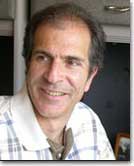 Rick Altman is the host of the PowerPoint Live User Conference and a long-time crusader of bringing a sanity check to the presentation community. Through multiple books, training videos, dozens of online articles, and now a blog and webinar series, Rick offers advice, strategy, and technique for those seeking to master their presentation projects.
Rick Altman is the host of the PowerPoint Live User Conference and a long-time crusader of bringing a sanity check to the presentation community. Through multiple books, training videos, dozens of online articles, and now a blog and webinar series, Rick offers advice, strategy, and technique for those seeking to master their presentation projects.
PowerPoint Live is attended by over 200 annually and has become one of the must-attend events for those in the business of creating and delivering professional-grade presentations.
Who Should Purchase:
- Communications professionals who want to enhance their partnership and value to the business.


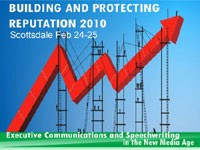
 David Murray
David Murray
